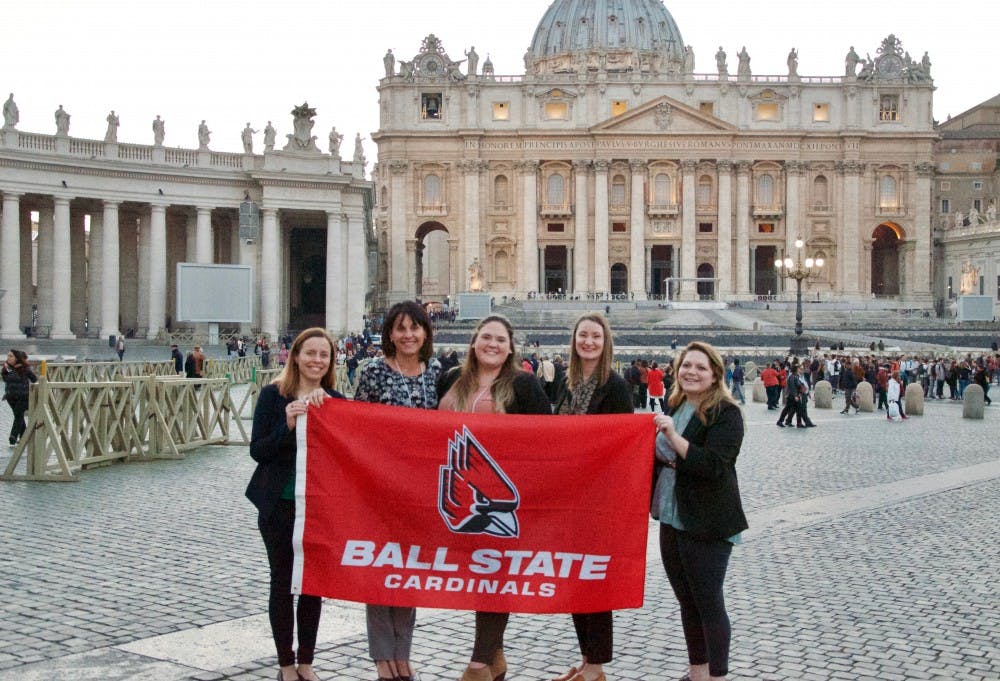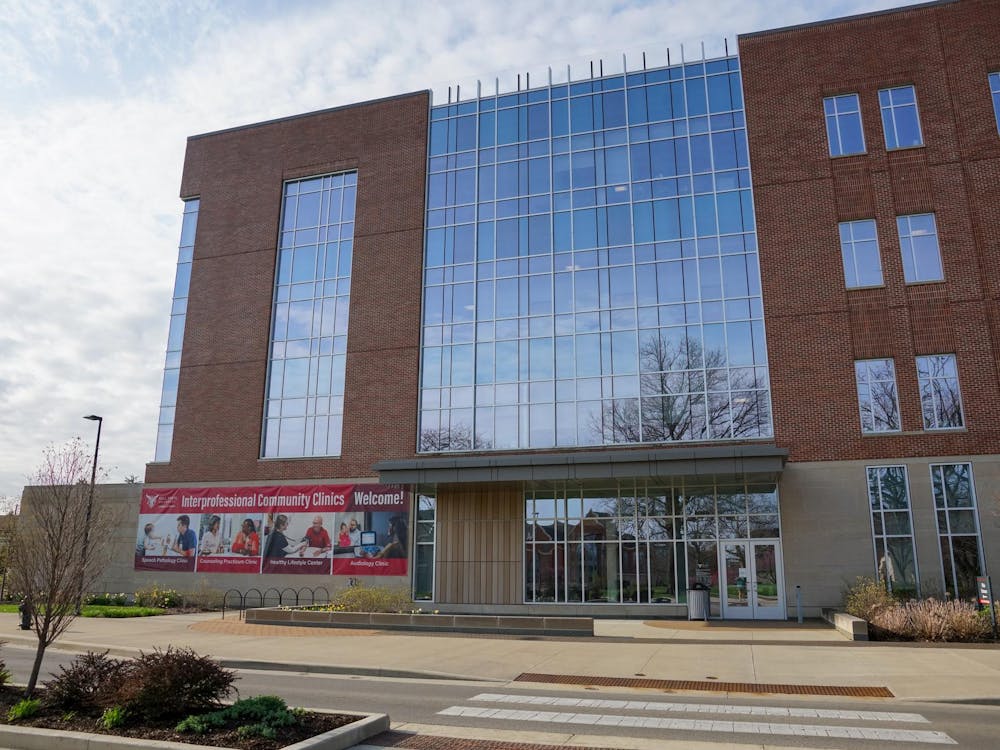The statistics:
- Around the world, women and girls often spend up to 6 hours each day collecting water.
- Globally, 1/3 of all schools lack access to safe water and sanitation.
- Every 90 seconds a child dies from a water-related disease.
- Sixty-nine percent of the water taken from rivers, lakes and aquifers is used to grow food globally. Another 19 percent goes to industrial production, and 12 percent is used for city water services.
- 1.6 billion people currently live in countries and regions with absolute water scarcity. That number is expected to rise to 2.8 billion people by 2025.
Information gathered from water.org, fao.org and water.worldbank.org.
Four graduate students in the Center for Emerging Media Design and Development master’s program spent three days helping Circle of Blue produce “WATERSHED: Replenishing Water Values for a Thirsty World,” hosted by Pope Francis at the Vatican during World Water Week.
EMDD director Jennifer Palilonis said people around the world gathered for WATERSHED at St. Peter’s Square on March 22 to share the reality, struggles, hopes and fears about the world’s water supply.
Pope Francis led the discussion with his papal address that looked at how the world values and understands water as a resource.
Four hundred leaders from 23 different countries convened at the conference, which was co-hosted by the Vatican's Pontifical Council for Culture and the Club of Rome in collaboration with Circle of Blue. The World Economic Forum Global Future Council on the Environment also provided input.
During the event, EMDD students updated WATERSHED and the Blue Roots Project's social media accounts through live coverage and tweets. Over 5,800 people around the world watched on Facebook Live.
“If there was a graphic needed, a social media post, whatever it was, I was behind the scenes doing that,” Briee Eikenberry, an EMDD student said.
In addition to helping with live coverage, the Ball State team helped lead brainstorming exercises with representatives from the Vatican, World Bank, Rockefeller Foundation and other international organizations.
Eikenberry said participants discussed action plans that could help improve water security, safety, education, communication, resource management, governance and funding around the world.
“From the start, BSU’s team has been at the front lines, from collecting water stories from around the world, to literally sitting at the table with these global thinkers in Rome to shape a better water future through design, media, networks and creative passion,” said Carl Ganter, co-founder and director of Circle of Blue.
Palilonis said she has never been more proud of a student group.
“Their professionalism, talent and poise under pressure is something to admire,” she said.
But standing on a platform next to the pope during the papal address and leading discussions in front of global leaders was not foreseen when the EMDD team started the Blue Roots Project in January 2016.
Palilonis said the student’s year of research, prototype testing, creation of a website and idea to start the campaign, #MyWaterStory, led them to Rome.
The Blue Roots Project started as a partnership with the Circle of Blue, a nonprofit news organization that focuses on water’s relationship to food, energy, climate and health.
In 2010, Ball State students began working on Circle of Blue's Choke Point U.S., an in-depth package of reporting and information graphics about the competition between water and energy in the United States, Ganter said. This relationship led to the new project and work done for WATERSHED.
Palilonis said Ganter reached out to her a year ago to see if students could help Circle of Blue more.
"One problem they had was reaching the average young person," Palilonis said.
EMDD students BriAnna Eikenberry, Jessica Pettengill, Aiste Manfredini and Sarah Janssen took on the challenge.
They used human-centered design knowledge to create a website that served as a hub for current and future work called The Blue Roots Project.
Along with Circle of Blue, they partnered with Project Wet to add a teacher resource page on The Blue Roots Project’s website. This page offers educational materials for K-12 teachers around the world interested in adding the value of water and World Water Week discussions into lesson plans.
For six months, the EMDD team researched audiences, water space and similar projects to come up with a way to engage youth.
Eikenberry said what they found was interesting.
“Younger generations like to share stuff about themselves and brag a little," Eikenberry said. “They like to feel good about themselves, whether that is by supporting a charity or sharing a story about themselves.”
In response, the team developed a social media campaign called #MyWaterStory to make people aware of water issues by sharing personal stories.
Circle of Blue liked the students' idea so much, Palilonis said Ganter suggested they turn it into a global campaign, rather than one that only aims to reach people around Indiana.
“In just two months it went from just being a local thing to something anybody in the world can see,” Eikenberry said.
She said her team created various prompts and asked people to respond using #MyWaterStory on social media, worldwatervalues.org and bluerootsproject.org.
“The cool thing is that people then took those prompts for inspiration and would submit something else,” Eikenberry said.
Pictures, illustrations, paintings and research papers were sent in. Stories ranged from people enjoying beautiful lake views to helping communities get clean water.
Since the campaign launched in January 2017, over 500 #MyWaterStory submissions have been received from different countries including the United States, Lithuania, Denmark, Ukraine, Iran, Uganda, Australia, India, Kenya, Cyprus, rhe Netherlands, Republic of Singapore, Tanzania amd Armenia.
“It shows how powerful social media can be,” Palilonis said. “When you are thoughtful and innovative and creative, there is a lot you can do to leverage existing channels.”
Eikenberry said her team’s dynamic helped lead it to success.
“Even though we all come from a journalism background, we all have different focuses, interests and experiences,” she said.
EMDD plans to continue educating people through The Blue Roots Project.
"The cool part about #MyWaterStory is that it lives on forever," Palilonis said.
She said a new team of EMDD students will take over the project next semester.





